Search
Did you mean: Cronus?
Search Results

Image Gallery
10 Maps of Bronze Age Empires
During the Bronze Age, which spanned roughly from 3300 BCE to 1200 BCE, several powerful empires emerged, shaping the course of early civilization. In this collection of ten maps, we take a look at the empires that flourished in regions such...

Image
Bronze Head of Medusa
The bronze head of Medusa is a decorative element from one of the Nemi Ships built by Caligula around 37-41 CE. It is now in the Palazzo Massimo alle Terme in Rome.

Image
Bronze Greek Athlete
A bronze Greek athlete recovered from the sea off Marathon. 340-330 BCE. (National Archaeological Museum, Athens)
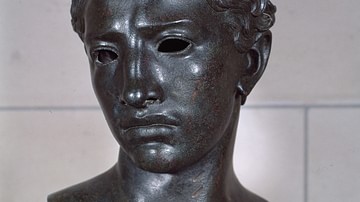
Image
Bronze Bust of Juba II
A bronze bust of Juba II as a young man, created sometime in the 20s BCE. The bust was found in Volubilis, the western capital of Mauretania during the reign of Juba II.
(Collection of the Rabat Archaeological Museum, Morocco)

Image
Bronze Cat from Egypt
Hollow-cast bronze cat, probably a votive offering to the goddess Bastet, from Tell Basta, Egypt, c. 664-30 BCE.
National Museum of Scotland, Edinburgh.
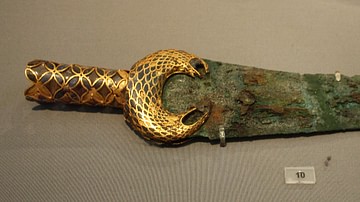
Image
Bronze & Gold Mycenaean Sword
A bronze Mycenaean sword with a gold handle inlaid with lapis lazuli, from Mycenae, Grave IV, Grave Circle A, 16th century BCE.
National Archaeological Museum, Athens.
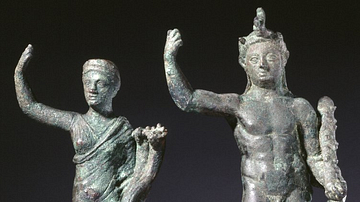
Image
Bronze Statues of Ptolemy II & Arsinoe II
These early 3rd-century BCE bronze statues from Alexandria, Egypt, portray the royal Ptolemaic couple Ptolemy II Philadelphus ("The Sibling-Loving") and Arsinoe II Philadelphus. Ptolemy II is wearing the scalp of an elephant, possibly symbolic...
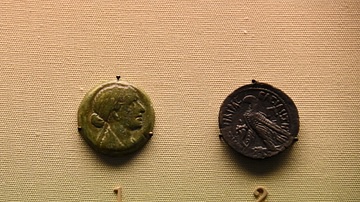
Image
Bronze Coin of Cleopatra
Bronze coin of Cleopatra (r. 51-30 BCE), with her portrait and eagle on the reverse. Minted in Alexandria, in modern-day Egypt. (The British Museum, London).
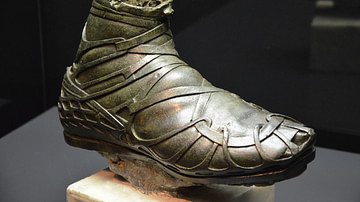
Image
Bronze caliga from an over life-size statue of a Roman cavalryman
This bronze caliga was part of an over life-size statue of a Roman cavalryman from the 1st or the 2nd century CE. Caligae were heavy hob-nailed military boots worn by Roman legionary soldiers, auxiliaries and cavalrymen throughout the period...
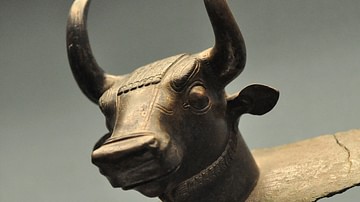
Image
Bronze Bull Head from Urartu
This is a bronze head of a winged bull, from a handle of a large cauldron. 8th to 7th centuries BCE, Urartian. From Toprakkale, modern-day Turkey. (The British Museum, London)